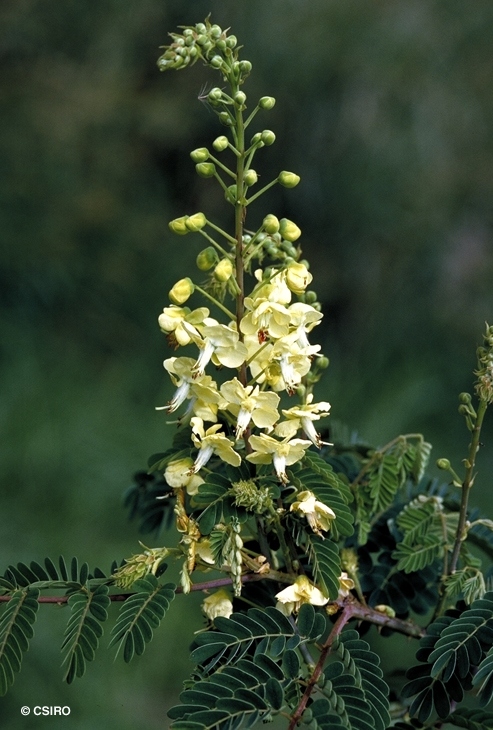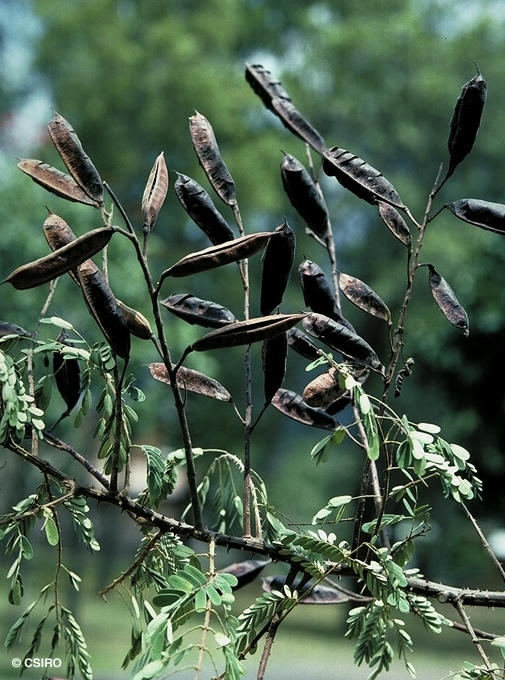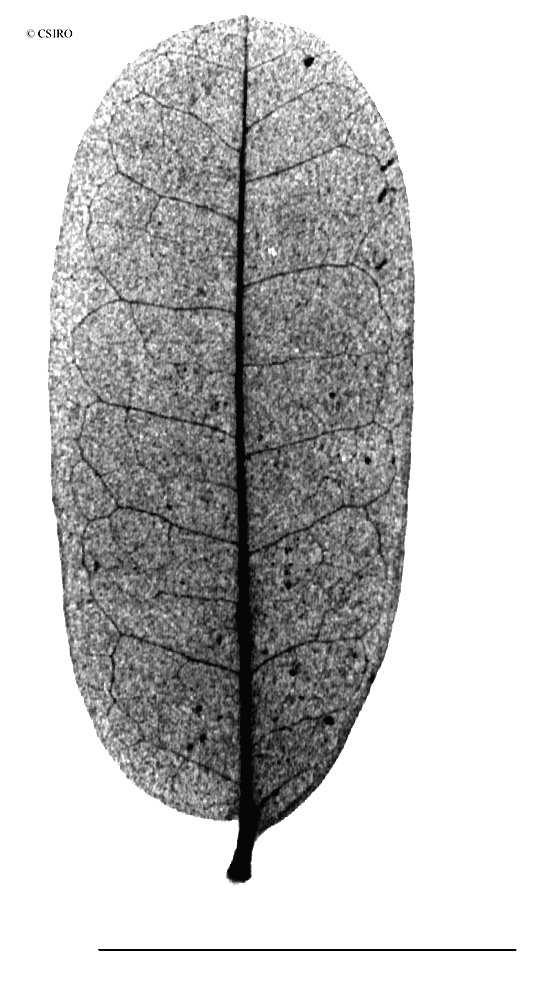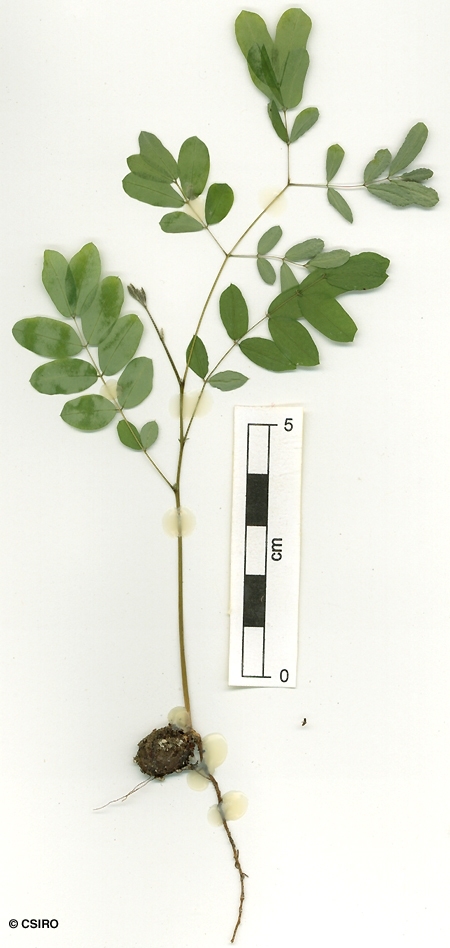Australian Tropical Rainforest Plants - Online edition
Biancaea decapetala (Roth) O.Deg.








Degener, O. (1936) Flora Hawaiiensis 7: K 7
Shoofly; Thorny Poinciana; Wait-A-While
Vine stem diameters to 4 cm recorded. Stems armed with recurved spines attached to a broad conical base.
Inflorescence densely clothed in short pale hairs, spines numerous on the lower parts. Petals dimorphic, 4 wide and 1 narrow, 11-13 x 12-13 mm. Stamens 10. Anthers orange or brownish red, basal half of the filaments clothed in tortuous white hairs. Ovary, style and stigma clothed in soft white hairs, hairs about 5 mm long. Stigma curved. Style about 10 mm long. Ovules about 7 per ovary.
First and second leaves pinnate, third leaf bipinnate. First leaf with 10 leaflets. Leaflets elliptic to obovate, apex mucronate, base obtuse and oblique, quite pale on the underside. Compound leaf rhachis hairy, spiny, the spines occurring at the point of attachment of the leaflets. At the tenth leaf stage: leaf compound, bipinnate, leaf consists of 60-72 leaflets attached to 3 pairs of secondary axes. Spines present on the upper surfaces of the compound leaf petiole and the primary axis of the compound leaf. Similar smaller spines also present on the upper surface of each secondary axis between the points of attachment of the leaflets, mainly the basal leaflets. Leaflet blades oblong-elliptic to elliptic-obovate, apex obtuse (often with a mucro) base obtuse (usually oblique). Leaflet blades much paler on the underside. Stipules hairy, about 2.5 mm long. Seed germination time 14 days.
This species may have medicinal properties.
Caesalpinia decapetala (Roth) Alston, A Handbook to the Flora of Ceylon, Suppl. : 89 (1931). Reichardia decapetala Roth, Nov. Pl. Sp. : 212(1821), Type: India, Heyne; holo: ?K. Caesalpinia sepiaria Roxb., Flora Indica (Carey) 2: 360(1832), Type: India, Roxburgh; iso: BM, K, Herb. Wallich. 5834A. Fide R. Hattink, Reinwardtia 9: 26 (1974).





